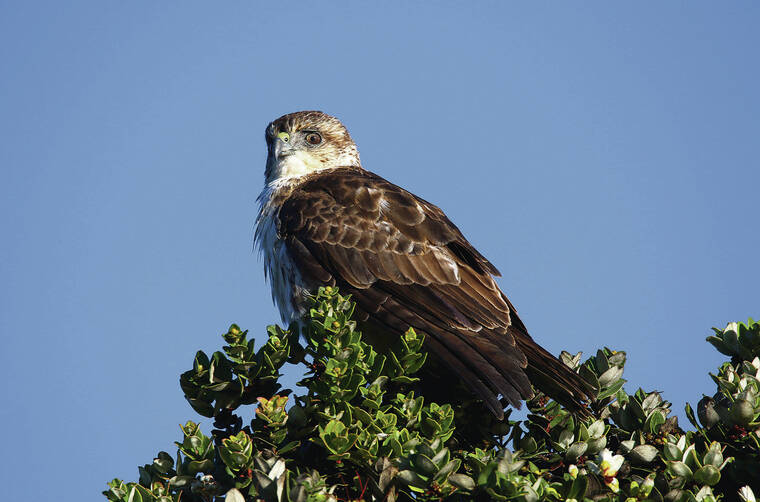Stronger penalties are now in place for anyone
who harms wildlife native
to Hawaii under a new law, just weeks after a hawk was discovered maimed on
Hawaii island and had to
be euthanized.
Gov. Josh Green on
May 27 signed Senate Bill 849 into law as Act 98.
It was designed to increase protections for indigenous species, including aquatic life, wildlife and land plants, and to support ecological balance and honor native culture.
The law calls for fines up to $20,000 and potential jail time, depending on the severity of each offence.
At the start of the last
legislative session, the Senate decided to prioritize
biosecurity
Sen. Dru Mamo Kanuha (D, Kona-Kau-Volcano) introduced SB 849 calling it “a key part of that effort” in
an email to the Honolulu Star-Advertiser.
Don’t miss out on what’s happening!
Stay in touch with breaking news, as it happens, conveniently in your email inbox. It’s FREE!
‘Io — a hawk native to
Hawaii, only found on
Hawaii island — are an apex predator that promote balance within the ecosystem.
“We recognized that existing laws did not go far enough to deter harm to our indigenous species—particularly the ‘io,” Kanuha wrote.
Previously, all violations against the native species were treated as
misdemeanors.
Under the new law, repeat offenses carry a Class C felony charge.
“This is a critical step forward in holding bad actors accountable and deterring future harm,” Kanuha wrote.
“Our ‘io — the Hawaiian hawk — are keystone species in the forests across
Hawaii, and especially within my Senate District on Hawai‘i Island,” he wrote.
“When reports surfaced of a dangerously emaciated ‘io in my own community, the urgency of this issue became deeply personal,” Kanuha wrote, referring to the hawk found in Mountain View.
The hawk was discovered on May 8 when a homeowner checked her chicken coop, only to find three chickens dead and the malnourished hawk, who had apparently broken in.
The hawk was missing a large chunk from the top of its beak, which still enabled the hawk to kill the chickens, but not eat them.
The homeowner called the Hawai‘i Wildlife Center, which referred the case to the Department of Land and Natural Resources.
Raymond McGuire, a wildlife biologist with the DLNR, suspected foul play, as the raw edge of the hawk’s beak-break appeared unnatural.
“We were pretty confident (that it was human-inflicted) based on how far back the break was and how vertical the slice was, it wasn’t a jagged break,” McGuire said over the phone.
“We’ve had many cases where people have harmed these hawks, so that was kind of on our radar
already.”
Beak cuts on birds of prey are often inflicted to deter attacks on livestock or people, especially when kept as pets.
McGuire said that someone may have intended to disarm the Mountain View hawk by damaging its beak in order to keep it or market it as a pet.
“We got a report that somebody was trying to give a hawk away on Craigslist,” he said, explaining that the injured hawk in Mountain View was found just “a few days later.”
Rylen Navarro, a student at Mililani High School, wrote in support of SB 849.
“I strongly believe that increasing the severity of penalties for killing or endangering these indigenous species is the most effective way to sustain the
wildlife of our state and
to preserve the diversity
of the islands,” Navarro wrote.
Bree Kochi, another student at Mililani, also submitted testimony in support of stronger protections.
“Indigenous wildlife holds rich historical significance,” Kochi wrote.
“Without these species, we would lose our cultural identity.”
